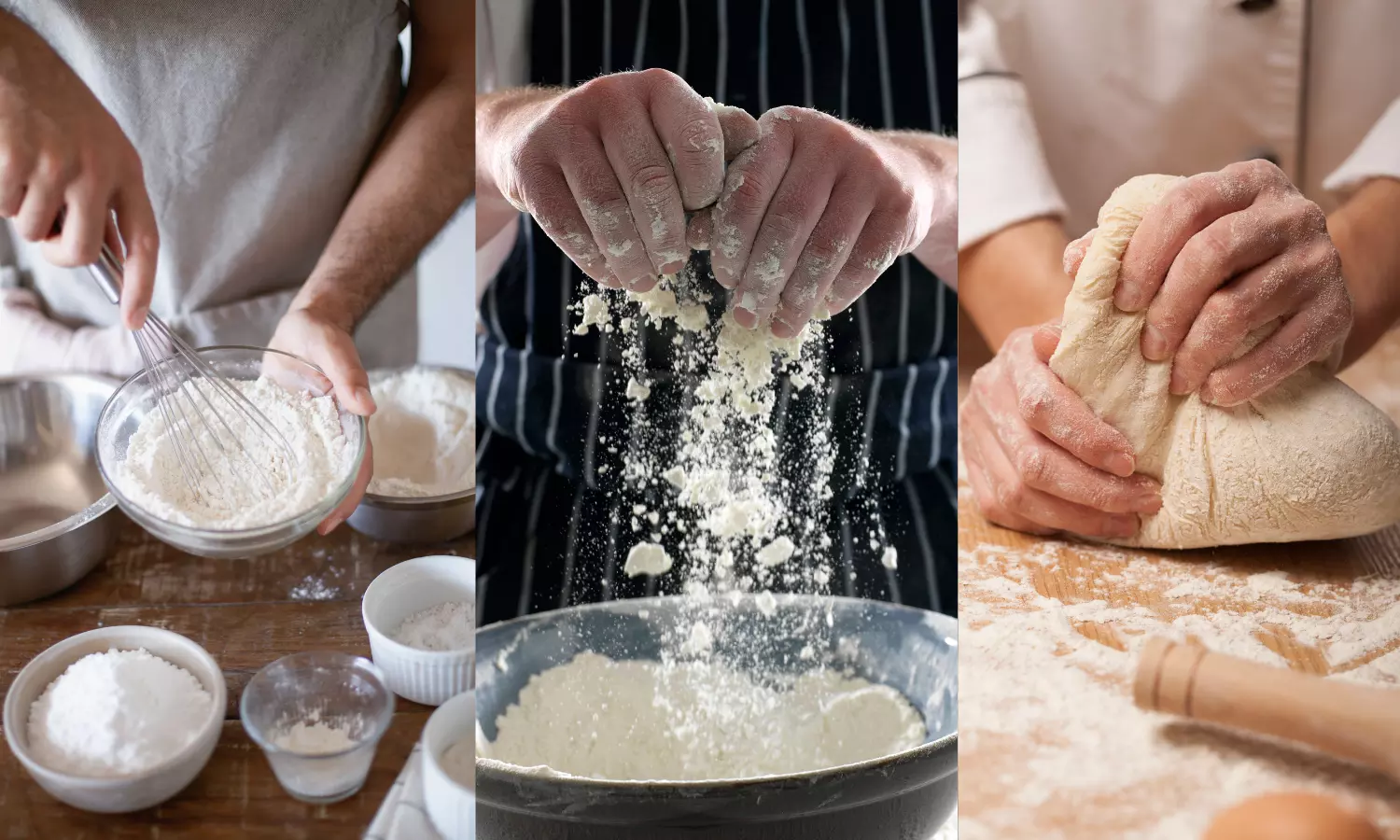Baking 101: lingo you must know to master the skill
Build your foundation in baking as you familiarise yourself with these 10 terms
- By Ananya GandhiLoading...
- | 28 July 2023 3:41 AM GMT
 X
X
Have you ever come across a term in a recipe and you weren’t sure what it meant? Baking is a craft, a mixture of science and art. And we often come across terms that we aren’t sure what to do with. To be a better baker, you need to learn the language of baking.
If you are a passionate amateur, taking your nascent steps in the fluffy yet technical world of viennoiserie, mastering these ten essential baking terms is your gateway to creating mouthwatering baked delights. From understanding technical terms to realising when it needs to be used, we've got you covered with this comprehensive list.
Use this handy ‘cheat sheet’ to help you decode all the recipes you have been wanting to try and let nothing come in the way of your creativity.
1. Blind baking
The term is widely used to refer to pre-baking a pie crust or tart shell without the filling to ensure that the crust is fully cooked and won't become soggy when the unbaked filling, like a fruit filling in pies or coconut cream is added.
2. Folding
Folding is a technique used to incorporate delicate ingredients, such as whipped egg whites or flour, into a batter or dough without deflating it. It involves gently lifting and turning the mixture with a spatula or spoon.
3. Bain-marie (Water bath)
A baking technique that involves placing a dish within a larger pan filled with water. Water baths are frequently used for products that require to be baked with a little steam and moisture, such as custards, cheesecakes, and other delicate desserts, to ensure even cooking and prevent cracking.
4. Creaming
A mixing technique where butter and sugar are beaten together to incorporate air until light and fluffy, creaming helps create air pockets in the dough (or batter), which results in a tender and light texture in baked goods.
5. Proofing
When you come across the term ‘proofing’, it essentially means that the dough needs to be set aside to rest, in a slightly humid area to allow it to rise, after it has been shaped. This process allows yeast or other leavening agents to ferment and produce carbon dioxide, which causes the dough to expand.
6. Kneading
The process of working or muscling dough by hand or using a mixer with a dough hook to develop a gluten network is referred to as kneading. This helps create elasticity in the dough, giving structure and texture to bread and other baked goods.
7. Lamination
A process used in viennoiserie, such as croissants and puff pastry, lamination would mean to fold layers of butter in the dough to create flaky, buttery textures.
8. Docking
Docking means poking small holes with a fork or making shallow cuts on dough or pastry before baking to prevent it from puffing up unevenly. It allows steam to escape and helps maintain an even shape during baking. For example, pizza bases and tart dough are docked as small holes with a fork or a roller dock.
9. Deglazing
Deglazing is a technique used to loosen and dissolve flavourful browned bits (called fond) that stick to the bottom of a pan after searing or roasting. It is often done by adding liquid, such as broth or wine, to the hot pan and scraping the bits with a spoon to incorporate the flavours into sauces or gravies. For example, when we make apple pie, deglazing the pan with apple cider to capture caramelized flavors for the filling before baking.
10. Leavening agent
Leavening agents are ingredients that help the dough or batter rise and become light and fluffy. Common leavening agents include baking powder, baking soda, and yeast.
Knowing these baking terms will give you a solid foundation and help you understand recipes and techniques more effectively. Happy baking!

Ananya Gandhi
Ananya grabs at every chance she gets to spend time with strangers listening to their stories, painting or reading some romantic-thriller novel almost everywhere. Her love for food encompasses everything from crispy fried chicken to a creamy cheesecake. And this combined passion for food and creativity, paired with a knack for social media enables her to make some fascinating content for her Instagram.



